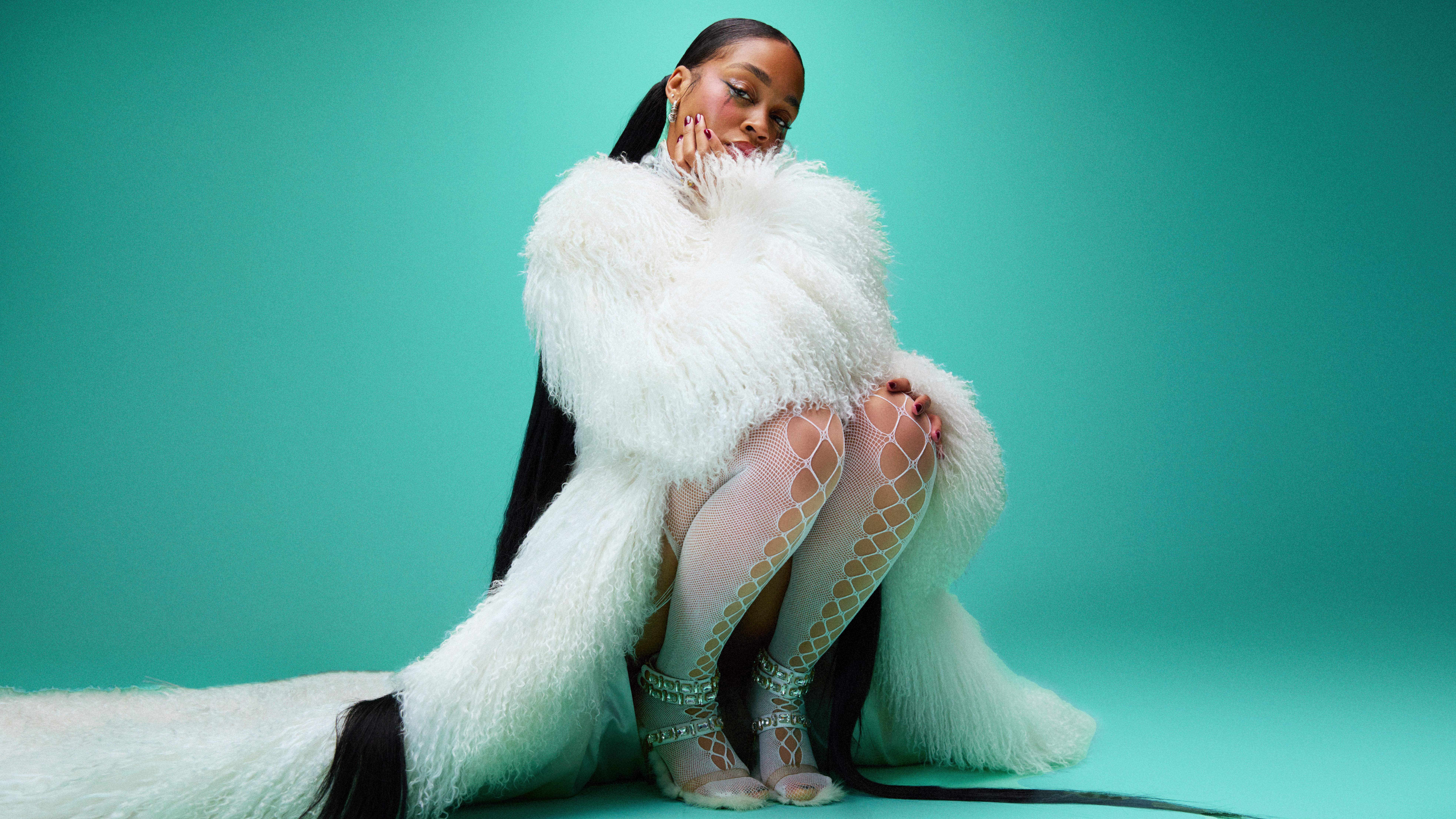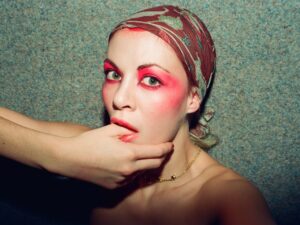KÖNIG GALERIE is holding an online auction of digital art over the weekend. And here’s everything you need to know!
A CONVERSATION on ART & NFTS: CURATOR ANIKA MEIER AND ARTIST OLIVE ALLEN
The art world is turned upside down. What are those NFT’s everyone keeps talking about all of a sudden? And can digital art even be considered as art? Mike Winkelmann, better known as Beeple, just had his digital work “Everydays: The First 5000 Days” auctioned by Christie’s for a record price of $69.3 million (it was originally sold in cryptocurrency). And now KÖNIG GALERIE is presenting the first gallery-curated digital exhibition in the virtual space Decentraland, entitled THE ARTIST IS ONLINE. DIGITAL PAINTINGS AND SCULPTURES IN A VIRTUAL WORLD, to complement the current exhibition at St. Agnes, THE ARTIST IS ONLINE. PAINTING AND SCULPTURE IN THE POSTDIGITAL AGE. NFT’s, short for Non Fungible Token, serve as proof of authenticity for each digital file that is authenticated, exclusive and forgery-proof – and can be bought just like regular piece of art. We took the fact that KÖNIG GALERIE, one of our favorite addresses in Berlin to see and buy art, is holding an auction of only digital art starting Friday, the 26thof March as an opportunity to talk to Anika Meier, who curated the exhibitions with gallerist Johann König, and artist Olive Allen about digital art and virtual exhibitions.
THE ARTIST IS ONLINE is an exhibition that can be seen both as a face-to-face exhibition at St. Agnes and a virtual exhibition of digital art in Decentraland. Olive, maybe we can start with you explaining what digital art is and how it can be exhibited in a digital space?
Olive Allen: Digital art is currently a medium of my artistic practice. I’m still a painter but today iPad is my canvas and my brushes are digital. But I prefer not to be defined by my current choices. Both I and my art practice are constantly evolving, and I enjoy experimenting with a wide range of tools.
I believe the exhibition space should be specific to an artist’s intent. As though I’m not opposed to my work being displayed on the screen or printed out if it doesn’t have animated elements; but I think in Metaverse it can truly flourish and be experienced in a very unique way.
Anika, how did the whole idea of the exhibition come about?
Anika Meier: Johann invited me to curate an exhibition with him two years ago. We invited artists to come up with ideas for the future, Manuel Rossner for example was thinking about the future of art. His medium is Virtual Reality. Due to the pandemic we had to postpone the exhibition, and thinking about the future in the midst of the pandemic was something that wasn’t appropriate anymore. We launched Manuel’s VR piece as a digital solo show last year in April.
SURPRISINGLY THIS RATHER WORKS is both a spatial intervention and a virtual expansion of the physical gallery. The digital visitor enters the virtual gallery through the app KÖNIG GALERIE. SURPRISINGLY THIS RATHER WORKS shows a series of digital objects that form a parcours, which the visitor can explore by means of an avatar. Rossner transforms the brutalist church St. Agnes into a gaming environment inspired by the 1990s game show “American Gladiators” and by so-called gyms that are used for cutting-edge research in artificial intelligence by companies such as OpenAI in San Francisco.
Since we have been involved with digital art for a while, we were offered a piece of virtual land in Decentraland, a virtual world based on the blockchain, by the art collector and crypto enthusiast Shahin Tabassi that he had bought. He is interested in bringing the art world to the NFT space.
Rossner interpreted the brutalist architecture of the former church ST. AGNES, designed by Werner Düttmann and Arno Brandlhuber, in a 3D model and placed it in Decentraland. Digital art is presented in a genuine environment, and the visitors of Decentraland get to experience art again, which is otherwise only offered for sale on the websites of the NFT marketplaces. What is impossible in real space, becomes possible in digital space. Rossner, for example, exploits the potential of virtual space by drilling a hole through the sidewall of the Nave of ST. AGNES, placing a sculpture all the way through the whole, and thus providing an alternative entrance all the way up to the church tower.
Artists such as Manuel Rossner, Banz & Bowinkel, Mario Klingemann, and Addie Wagenknecht are among the pioneers in the field of digital art, especially when it comes to exploring the possibilities of using new technologies in the artistic production process of painting and sculpture. What is going to happen to the medium of painting in virtual reality? (Manuel Rossner) What are the materials that sculptures are going to be made out of in the future, using computers? (Banz & Bowinkel) In what ways and to what extent can Artificial Intelligence get creative? (Mario Klingemann)
What are artists doing that are at home in this field and what happens when a gallery creates digital experiences? Offline, of course, it’s about bringing people and art together and creating experiences there. And you can do that in digital, too – just in a different way.
How do you curate such a virtual exhibition? Are there any differences to curating a face-to-face exhibition?
AM: Online, of course, it’s very much about considering storage space, especially when you’re working in a given space. You only have a certain number of textures and materials. Sure, in real space there are also size constraints like the walls for example and you also have a limited space. The process is actually very similar and then at the same time very different.
Because there are other factors to consider?
AM: Yes, very simple example: How does the file go in there? Is it the right file? With a picture you have to take care of shipping etc. and now it’s about whether the file fits. Of course, artists ask offline how big our wall is and accordingly how big their work can be. In digital you don’t have that, you can make a sculpture as big as you want. With Thomas Webb’s tree, for instance, we looked at how it looked good and how big the tree could be scaled. That’s clearly faster than when an artist sends us a picture and all of a sudden you notice that the picture is too small or too big next to the other pictures. The questions are similar, but the approaches are very different. In a room, it’s quite clear that you hang paintings on the wall according to lines of sight. Online you look at how the user moves through the virtual space and you have to ask yourself: “Can there be another video hanging there?” Then you also have to change things more often because you can move around and walk around a lot more – in virtual space, there’s a lot more freedom of movement. We decided us against the first-person rigid perspective, but it was a curatorial decision not to do that. Why should we limit the view and do that just like it would be in real space, when there are so many more possibilities to walk around and take different perspectives in the digital space?
You started working on abstract paintings and now you have also been making digital art since 2018. How did you get into this, Olive?
OA: Oh, there was a lot before my abstract period… I made a bunch of drawings, stencils, mixed media, figurative paintings, architectural models. It’s just I haven’t had a habit of photographing or saving my work before. And on my site you see only a handful of works from that era – I destroyed or never uploaded works I wasn’t proud of.
Canvas or paper have always felt rather limiting to me. I always saw technology as that mysterious component that has been missing. Early 2018 was a pivotal moment when I learned about NFTs and other possibilities of blockchain technology, stopped painting, and decided to found a startup and learn more along the way to elevate my artistic practice. Long story short, I found a way to transform my practice.
For THE ARTIST IS ONLINE. DIGITAL PAINTINGS IN A VIRTUAL WORLD, you created a digital work in the form of an NFT, entitled “I joined a triumphant procession of popular things.JPG” and which can be viewed in Decentraland. Can you explain the creation process in more detail? How do you create your digital works?
OA: I’m not as methodical as many artists in the space. If I ever do a tutorial people would be quite puzzled and be screaming at the video something like: “That doesn’t make sense! What? You’re erasing most of it? You’re sitting here staring at the screen undecided about the shade of purple? It’s been an hour! All of them are fine!” Haha
But of course, there is a principle that I follow 98% of the time: I always start with an idea in mind. I ask myself what is going on with me and the world at large and what is that I have to say about this moment in time and most importantly WHY is it important and why THIS particular work. I always have an approximate image in my mind when I start and it usually changes a lot in a process. But ideas and intent always stay.
“I joined a triumphant procession of popular things.JPG” is the work where I’m commenting on the general direction of art and culture, the age of populism. Therefore, I’m merely joining a procession that has been in motion already. It’s unclear where it’s going or how long it is, as there is no particular certainty in what stays and what goes. So far, I’m going along with the procession but still not sure how I feel about it and simply battling that familiar fear of being left behind.
THE ARTIST IS ONLINE is the first gallery exhibition to exist in Decentraland. Do you think the concept will last in the long term?
OA: The first curated by a major traditional art world gallery. YES!! And YESSSS to your question!
AM: That depends I would say. If you’re interested in creating digital experiences like we are, then you can work with certain people there. We are of course interested in digital art and we intend to work historically in the long term. But the know-how to design something like this is still very rare and we are really lucky to have someone like Manuel Rossner at our side, who has been doing this for 10 years and knows exactly what to look out for and how to implement it technically. But I also believe that many galleries are currently working on this, and it depends on how they position themselves and, of course, how great the interest is. We would like to open up the art world with this experiment, and the exhibition in the digital space is a chance to inspire many crypto-collectors. This is also an educational task that we are trying to continue on Clubhouse. I think there will be a lot of things happening and coming up in the future. It’s not going to go away, as Mario Klingemann said this morning in a livestream, I did with him on the gallery’s Instagram channel. After all, digital art won’t replace museums or real existing galleries and you don’t want to compare that either.
Can you explain what you can do with digital art as a buyer?
OA: Digital art is just art. And art is always as good as the artist. As for the mechanics like setting up a digital wallet, buying cryptocurrency, it is only one Google search away.
AM: You can have it on your laptop or smartphone. If you’re traveling somewhere, you can then show the original images on your phone, you can’t do that with the collection of offline art of course. At home you can totally hang up screens as frames and let the artwork run through as a slideshow. I think it’s really interesting that in this digital space we’re starting again from scratch with considerations and questions that seemed to have been resolved long ago. For example, the environmental problem, of course it’s entirely bad that so much electricity is used and that issue will certainly be solved, but we also have to talk about the sustainability of Art Basel or the shipment of artworks to fairs and then again to the buyers. Thomas Webb, for example, did a piece about planting trees to offset the carbon footprint. It’s a nice statement against the assumption of our helplessness.
Olive, do NFT’s have a different value compared to real artworks?
OA: NFTs can be real artworks too! I don’t think they should have a different value. Why? NFT is just a technology that is indifferent at its core. Art should be valued based on art, not the backend that ensures its seamless storage and transfer. I can’t say that it is a unanimous opinion.
How will NFTs change the art market? One could assume that they could contribute to a democratization of the art market, since everyone can sell and buy art, even for a small price.
AM: Exactly, everyone can collect and every artist can sell on an open marketplace. A gallery, of course, brings with it the reputation and positions that are believed to endure over the long term. We’re looking at what the historically relevant works are, and that’s what galleries and hopefully museums will do when they start collecting digital art. But the issue of participation is important, that fans can own part of it and be part of it. But the internet democratizes auctions and makes the art world more accessible, so yes. The prices are also (still) humane, online auctions sometimes start at $200.
OA: I think the most significant and necessary changes NFTs bring are built-in artist royalties, really putting works created digitally on par with more tangible art forms, like painting and sculpture, allowing everyone to be seen and sell their work.
Thank you!
Having started on Friday, March 26th and going through March 31th, the virtual exhibition will be auctioned on Opensea, a marketplace specializing in digital art. On sale will be 29 NFT’s by 22 artists which can be bought in the cryptocurrency ETH.
You can check out the virtual exhibition (and maybe buy a digital piece of art yourself?) here or book an appointment for the exhibition THE ARTIST IS ONLINE. PAINTING AND SCULPTURE IN THE POSTDIGITAL AGE at St. Agnes here!
Images courtesy of KÖNIG GALERIE and the artists
Interview by Antonia Schmidt



